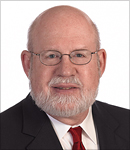In order to facilitate integration of more distributed energy resources (DER) into distribution grids, U.S. utilities will have to apply standards that present opportunities and challenges as they create flexible, interoperable, and secure data and communication architectures.
Paving the Way
The Institute of Electrical and Electronics Engineers (IEEE) 1547 series of standards was developed to identify the fundamental technical aspects of connecting DERs—such as solar, charging stations, batteries, and demand response—to the electric grid. The standard is evolving to address the expansion of DER that interconnect with the distribution grid and the growing needs for remote monitoring and management of these assets. One of the changes to this series (1547.8) covers communications for microgrids and other groupings of DER assets to support interconnection to utility grids.
The IEEE 2030 standards family was designed to help foster interoperable communications solutions for DER asset integration to the grid. By March 1, 2018, California plans to adopt 2030.5 as the default protocol for smart inverter communications as part of Electric Rule 21, a set of regulations that describes the interconnection, operating, and metering requirements for generation facilities that interconnect to utilities regulated by the California Public Utilities Commission.
Title 24, the state’s Building Energy Efficiency Standards, seeks to reduce energy use and encourage zero net energy goals for residential and commercial buildings. The updated draft version of the rules that take effect in January 2020 will stipulate that building loads must support Open Automated Demand Response (OpenADR) as the communications data model for sending and receiving demand response management signals. That means that California will mandate utility and building construction compliance with new procurement requirements. And when the sixth-largest economy in the world takes a stand on grid communications standards, there will likely be reverberations for the entire domestic electric sector.
The International Electrotechnical Commission (IEC) 61968-5 (Distributed Energy Optimization) standard specifies internal utility system-to-utility system and utility-to-external entity (e.g., aggregator) communications and should be ratified within a few months. A broad range of other standards exist—each with their own security and application strengths and weaknesses, such as the Open Field Message Bus (OpenFMB), IEC 61968, Distributed Network Protocol (DNP) 3, and Modbus standards.
The many standards available for DER communications adds complexity to questions already confronting utilities, including:
- What are the communications architectures that will securely transport the data required to maintain situational grid awareness and control of DER assets?
- Will traditional, centralized-control architectures be sufficient for dealing with the numerous devices that will be connecting at the grid edge?
- What interoperable communications architectures must be in place to support new business models that may include transactive energy scenarios and flexible groupings of DER assets?
- What are the differences between normal and abnormal operating conditions, and how will different scenarios impact communications?
- How will the constraints of existing technologies and practices affect internet security?
- Will lightweight security (to avoid overhead in computing cycles and data traffic) be sufficient?
- How will security be defined, and where will it be located to manage the expanding attack surface created by DER expansion?
A Path Forward
There are more questions than answers when it comes to the standards governing DER communications. Nevertheless, utilities must manage the increasing number of DER assets interconnecting to their grids. The starting point is to deploy secure architectures that enable the right assets to be added to the grid at the right time and at the right level of investment.
Grid modernization initiatives must be coordinated with legacy infrastructure in ways that enhance grid security while aligning cost-effectively with consumer and policy needs. The ideal grid architecture must be able to evolve in parallel with innovative technology.
The Electric Power Research Institute (EPRI) has created a special research project to help utilities create their communications networks for the DER-interconnected future. The research will help answer critical questions and offer guidance to utilities as they plan their future communications infrastructures with data models, communication protocols, and secure network architectures.
For more information about how to participate in this research, please contact Christine Hertzog (chertzog@epri.com) or Chris Kotting (Ckotting@epri.com).
About the Authors
 Walt Johnson is a technical executive at the Electric Power Research Institute (EPRI), where he specializes in smart grid strategies, technologies, standards, applications, and IT Enterprise Architecture. He managed EPRI’s Automated Demand Response (OpenADR) Project and supports EPRI’s information and communication technologies for Distributed Energy Resources project set. As an IT systems specialist with over thirty years of national and international experience, Dr. Johnson has held leadership positions at NASA, Gartner, Raychem, and the California ISO, and headed a CIGRÉ task force on architectural standards for real-time grid control systems. Prior to joining EPRI, he worked for DNV KEMA as a business process subject matter expert supporting execution of smart grid and energy IT consulting projects involving ISOs, RTOs, and global industry consortia. He holds a B.A. (cum laude) in chemistry from Claremont McKenna College and a Ph.D. in inorganic chemistry from Indiana University. He is a member of IEEE and of Sigma Xi, the Scientific Research Society.
Walt Johnson is a technical executive at the Electric Power Research Institute (EPRI), where he specializes in smart grid strategies, technologies, standards, applications, and IT Enterprise Architecture. He managed EPRI’s Automated Demand Response (OpenADR) Project and supports EPRI’s information and communication technologies for Distributed Energy Resources project set. As an IT systems specialist with over thirty years of national and international experience, Dr. Johnson has held leadership positions at NASA, Gartner, Raychem, and the California ISO, and headed a CIGRÉ task force on architectural standards for real-time grid control systems. Prior to joining EPRI, he worked for DNV KEMA as a business process subject matter expert supporting execution of smart grid and energy IT consulting projects involving ISOs, RTOs, and global industry consortia. He holds a B.A. (cum laude) in chemistry from Claremont McKenna College and a Ph.D. in inorganic chemistry from Indiana University. He is a member of IEEE and of Sigma Xi, the Scientific Research Society.
 Christine Hertzog is a technical advisor for information and communications technologies (ICT) and cyber security at the Electric Power Research Institute (EPRI). She works with utilities to resolve the unique and complex challenges of grid modernization initiatives by leveraging tools and deliverables from EPRI’s collaborative R&D programs in ICT and Cyber Security. Hertzog also helps shape ICT and cyber security R&D directions. Prior to this role, Hertzog was the founder and managing director of SGL Partners and the Smart Grid Library, consulting and information services firms focused on smart grid and smart infrastructure ecosystems. Hertzog is the author of the Smart Grid Dictionary, co-authored Data Privacy for the Smart Grid, and has written numerous articles about grid modernization. She is a recognized thought leader and regular speaker at industry conferences, and has also served in an advisory capacity to innovators, industry associations, and publications. She has an MS in Telecommunications from the University of Colorado, Boulder.
Christine Hertzog is a technical advisor for information and communications technologies (ICT) and cyber security at the Electric Power Research Institute (EPRI). She works with utilities to resolve the unique and complex challenges of grid modernization initiatives by leveraging tools and deliverables from EPRI’s collaborative R&D programs in ICT and Cyber Security. Hertzog also helps shape ICT and cyber security R&D directions. Prior to this role, Hertzog was the founder and managing director of SGL Partners and the Smart Grid Library, consulting and information services firms focused on smart grid and smart infrastructure ecosystems. Hertzog is the author of the Smart Grid Dictionary, co-authored Data Privacy for the Smart Grid, and has written numerous articles about grid modernization. She is a recognized thought leader and regular speaker at industry conferences, and has also served in an advisory capacity to innovators, industry associations, and publications. She has an MS in Telecommunications from the University of Colorado, Boulder.








